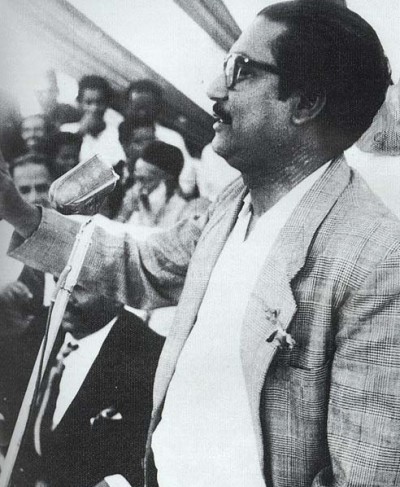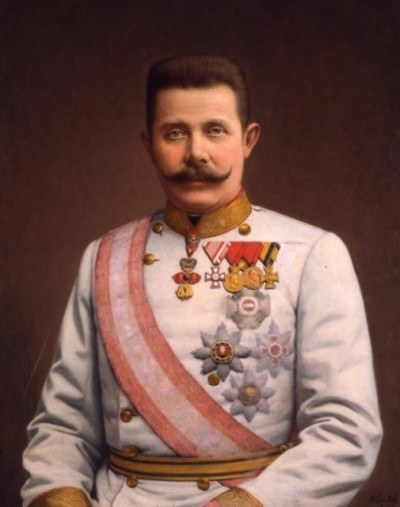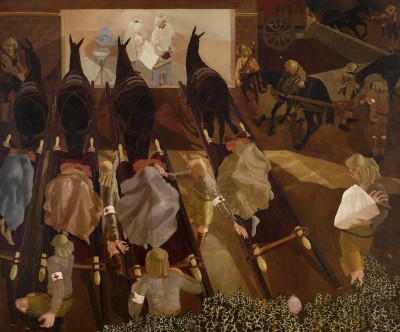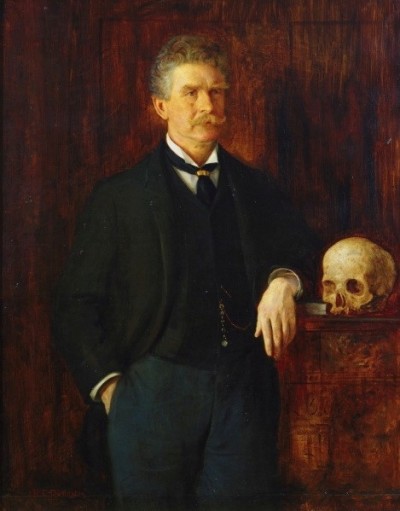Course description
Sheikh Mujib’s Six-Point Programme
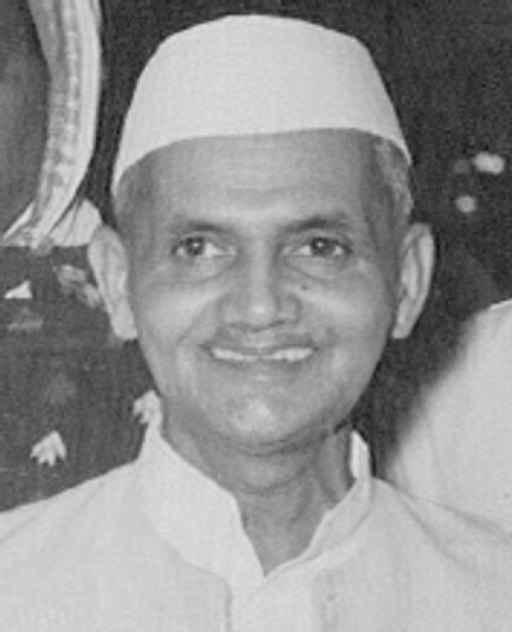 The meeting in Lahore of Pakistan’s political leaders from both the East and the West parts of the country had been intended to allow for discussion of the Tashkent Declaration, which was signed on 10th January, 1966, to end the Indo-Pakistani War of 1965 over the rights and responsibilities of each nation in Kashmir. Although the Soviet-sponsored peace agreement was regarded as a great success by the international community, that was not how it was seen at home. In the first place, the day after the Declaration was signed, Indian Prime Minister, Lal Bahadur Shastri died in unexplained circumstances in Uzbekistan. The Indian government has never made any statement on his death. On the contrary, it has avoided saying anything at all about it and has refused to conduct an investigation, despite Shastri’s widow blaming her husband’s death on poisoning. But, if things were bad in India, the agreement caused rioting in Pakistan, as the population was very disappointed with the outcome and could not believe that Prime Minister Ayub Khan had signed the treaty. To make matters worse, he refused to comment and went into isolation, not speaking to Parliament or the media about the Declaration.
The meeting in Lahore of Pakistan’s political leaders from both the East and the West parts of the country had been intended to allow for discussion of the Tashkent Declaration, which was signed on 10th January, 1966, to end the Indo-Pakistani War of 1965 over the rights and responsibilities of each nation in Kashmir. Although the Soviet-sponsored peace agreement was regarded as a great success by the international community, that was not how it was seen at home. In the first place, the day after the Declaration was signed, Indian Prime Minister, Lal Bahadur Shastri died in unexplained circumstances in Uzbekistan. The Indian government has never made any statement on his death. On the contrary, it has avoided saying anything at all about it and has refused to conduct an investigation, despite Shastri’s widow blaming her husband’s death on poisoning. But, if things were bad in India, the agreement caused rioting in Pakistan, as the population was very disappointed with the outcome and could not believe that Prime Minister Ayub Khan had signed the treaty. To make matters worse, he refused to comment and went into isolation, not speaking to Parliament or the media about the Declaration.
 On 4th February, Sheikh Mujib arrived with his team in Lahore. The next day, he asked the meeting if he could put a six-point plan on the next day’s agenda to discuss making the two halves of Pakistan financially independent of each other. In fact, the only areas where the government of both East and West Pakistan would have control over the two parts of the nation would be in defence and foreign affairs. Everything else should be managed separately according to the laws which each Parliament would pass.
On 4th February, Sheikh Mujib arrived with his team in Lahore. The next day, he asked the meeting if he could put a six-point plan on the next day’s agenda to discuss making the two halves of Pakistan financially independent of each other. In fact, the only areas where the government of both East and West Pakistan would have control over the two parts of the nation would be in defence and foreign affairs. Everything else should be managed separately according to the laws which each Parliament would pass.
It was a bombshell! Nearly all the delegates saw the Plan as a declaration of independence. Apart from the East Pakistan Awami League members at the meeting, everybody else opposed it. They would not even agree to discuss the issues Sheikh Mujib wanted to raise. After all, there were riots in West Pakistan, which had expected a more favourable outcome to the Tashkent meeting. There was a political crisis (and one which would lead to the downfall of Ayub Khan a few years later) at the heart of the government. And here was Sheikh Mujib pouring oil on the fire by talking about devolution of central power to his own half of the country. It was past belief!
These days, we often associate the Language Martyrs with the fight for an independent Bangladesh. School children dress in black and white and lay flowers at hundreds of imitation Shahid Minars in playgrounds across the country. The 21st February is a national holiday and the United Nations has named the date International Mother Language Day.
 But if the right to speak the Bangla language was an emotional call from the heart by Bengalis for self-determination, the 1966 Six-Point Programme was a well-reasoned argument from the brain for their economic rights. Perhaps, the economic solutions proposed to put right the imbalance in power and expenditure between West and East Pakistan are not as exciting or as understandable to school students today as the right to speak, read and write in Bangla but they were at the very centre of East Pakistan’s miserable condition. This half of the country was the Cinderella of the story.
But if the right to speak the Bangla language was an emotional call from the heart by Bengalis for self-determination, the 1966 Six-Point Programme was a well-reasoned argument from the brain for their economic rights. Perhaps, the economic solutions proposed to put right the imbalance in power and expenditure between West and East Pakistan are not as exciting or as understandable to school students today as the right to speak, read and write in Bangla but they were at the very centre of East Pakistan’s miserable condition. This half of the country was the Cinderella of the story.
Let’s take a closer look at what Sheikh Mujib and his team wanted the Lahore Conference of 1966 to consider:
1. The Constitution should provide for a Federation of Pakistan, based on the 1940 Lahore Resolution, and parliamentary form of government.
2. The federal government should deal with only defence and foreign affairs.
3. Two separate, but freely convertible, currencies for the two parts of the country should be introduced. If this were not possible, there should be one currency for the whole country, but there must be rules to stop the flight of capital from East to West Pakistan. Furthermore, there should be a separate banking reserve and monetary policy for East Pakistan.
4. The power of taxation and revenue collection should be with the governments of the two states of Pakistan. However, the country would receive a share of taxes to meet its costs.
5. There should be two separate accounts for the foreign exchange earnings of the two states. Both East and West Pakistan should pay for the foreign exchange requirements of the federal government equally or in agreed proportions. Local products should move tax-free between the two states. The Constitution should allow the two parts of the country to set up trade links with foreign countries.
6. East Pakistan should have a separate military or paramilitary force, and Navy headquarters should be in East Pakistan.
 It is not hard to see why delegates at the 1966 Lahore Conference thought that Sheikh Mujib’s plan was virtually a declaration of independence by East Pakistan. In effect, the country that would become Bangladesh would have its own currency or at least rules stopping the transfer of money from the East to the West, where the seat of government was, and which most upper-class Pakistanis saw as home. It was, of course, these same West Pakistanis who owned much of the industry in East Pakistan and sent their money back to Lahore, Karachi and Peshawar. It would have control over its own gold and foreign currency reserves. It would be able to set its own tax rates and would be able to keep the income from these in its own East Pakistan Bank. It would not have to depend on the West in every crisis.
It is not hard to see why delegates at the 1966 Lahore Conference thought that Sheikh Mujib’s plan was virtually a declaration of independence by East Pakistan. In effect, the country that would become Bangladesh would have its own currency or at least rules stopping the transfer of money from the East to the West, where the seat of government was, and which most upper-class Pakistanis saw as home. It was, of course, these same West Pakistanis who owned much of the industry in East Pakistan and sent their money back to Lahore, Karachi and Peshawar. It would have control over its own gold and foreign currency reserves. It would be able to set its own tax rates and would be able to keep the income from these in its own East Pakistan Bank. It would not have to depend on the West in every crisis.
Sheikh Mujib argued that it was only by accepting these measures that the two halves of Pakistan could remain as one nation because the nearly twenty-year history of the country showed that the shares of income and expenditure were so very unequal. For instance, from 1950 – 55, government spending on West Pakistan was more than 68%; and from 1956 to the independence of Bangladesh never dropped below 70%, even though the proportion of population in that part of the country was only just over 36%.
Year | Spending on West Pakistan in crore rupees | Amount spent on West Pakistan as % of total | Spending on East Pakistan in crore rupees | Amount spent on East Pakistan as % of total |
% total pop | | 36.23% | | 63.77% |
1950-55 | 1,129 | 68.31 | 524 | 31.69 |
1956-60 | 1,655 | 75.95 | 524 | 24.05 |
1961-65 | 3,355 | 70.5 | 1,404 | 29.5 |
1966-70 | 5,195 | 70.82 | 2,141 | 29.18 |
Total | 11,334 | 71.16 | 4,593 | 28.84 |
East Pakistan had nearly double the population of West Pakistan but received less than half the money.
 However, the situation seemed even more unjust when the export earnings of the two halves of the country were considered. Even in 1960, around 70% of Pakistan's export earnings came from East Pakistan, although this proportion dropped as international demand for jute decreased. By the mid-1960s, East Pakistan had less than 60% of the nation's export revenue. This was because West Pakistan had benefitted from Ayub Khan's ‘Decade of Progress’ with its successful Green Revolution in wheat and from growing markets for West Pakistani textiles, all paid for by East Pakistan’s jute exports, while its own standard of living, on the other hand, stayed terribly low. Bengalis were also upset that West Pakistan, although wealthier, received more foreign aid.
However, the situation seemed even more unjust when the export earnings of the two halves of the country were considered. Even in 1960, around 70% of Pakistan's export earnings came from East Pakistan, although this proportion dropped as international demand for jute decreased. By the mid-1960s, East Pakistan had less than 60% of the nation's export revenue. This was because West Pakistan had benefitted from Ayub Khan's ‘Decade of Progress’ with its successful Green Revolution in wheat and from growing markets for West Pakistani textiles, all paid for by East Pakistan’s jute exports, while its own standard of living, on the other hand, stayed terribly low. Bengalis were also upset that West Pakistan, although wealthier, received more foreign aid.
Economists in East Pakistan argued for a "Two Economies Theory" within Pakistan itself, which was founded on the Two Nation Theory with India. The so-called Two Economies Theory suggested that East and West Pakistan had different economic features which should not be regulated by a federal government in Islamabad.
Yet, economics was not the only issue included in Sheikh Mujib’s Six-Point Programme. His demand for separate armed forces so that the eastern wing of the country did not have to depend only on the West was especially relevant after the 17-day war that had just taken place in 1965 with India. Yet, there was another reason. The Pakistani military comprised only 10% East Pakistanis and the Civil Service only 15%. If East Pakistan were responsible for its own government and military, this imbalance would be repaired, of course.
 There were other forms of discrimination too. The works of the greatest Bengali writer, Rabindranath Tagore, the only Indian at that time who had ever won a Nobel Prize for Literature, were banned on Pakistani radio. But the Programme did not discuss these.
There were other forms of discrimination too. The works of the greatest Bengali writer, Rabindranath Tagore, the only Indian at that time who had ever won a Nobel Prize for Literature, were banned on Pakistani radio. But the Programme did not discuss these.
West Pakistani reaction to the Six-Point Programme was one of horror. The Prime Minister called Sheikh Mujib a traitor and a split with the All Pakistan Awami League was inevitable. No opposition party – even some in the eastern wing, like Jamaat-e-Islam – would work with Sheikh Mujib at all. Yet, the popular demand for the Six-Point Programme was unstoppable. A country-wide strike was called on 7 June, 1966, and thirteen protesters were shot dead – more than the number killed as Language Martyrs, by the way, but sadly forgotten today. Sheikh Mujib was arrested time and again as he toured the country. But this did not slow him down. As soon as bail was posted in Khulna, he set off for Rajshahi. When he was arrested there, he only had to wait for bail, before he headed for Dinajpur for another rally and another arrest. And so on. These charges against him only made matters worse, of course. He became a national hero, Bangabondhu.
The Agartala Conspiracy case of 1968 against Sheikh Mujib, when he was accused of plotting against Pakistan with India, was seen by the people for what it was: a smear campaign and, eventually, it was dropped.
Yet, it is worth making one final point. Sheikh Mujib’s Six-Point Programme only demanded what had already been agreed at an earlier conference in Lahore, this one in 1940, where the two halves of Pakistan were to be loosely connected in a federal Pakistan. Naturally, in 1947, this 1940 Lahore Resolution was forgotten and, because of this, the country fell apart.
If you want to watch some videos on this topic, you can click on the links to YouTube videos below.
If you want to answer questions on this article to test how much you understand, you can click on the green box: Finished Reading?
Videos:
1. The Tashkent Declaration (10:32)
2. Lahore Resolution (11:27)
3. Inequalities between East and West Pakistan (3:08)
4. Two Nation Theory (3:10)
5. Bangabandhu Sheikh Mujibur Rahman declaring 6-point demand (2:25)
6. Sheikh Mujib's 6-Point Demand: Autonomy and/or Independence (1:32)
7. Sheikh Mujib Six-Points (2:15)

 The meeting in Lahore of Pakistan’s political leaders from both the East and the West parts of the country had been
The meeting in Lahore of Pakistan’s political leaders from both the East and the West parts of the country had been On 4th February, Sheikh Mujib arrived with his team in Lahore. The next day, he asked the meeting if he could put a six-point plan on the next day’s
On 4th February, Sheikh Mujib arrived with his team in Lahore. The next day, he asked the meeting if he could put a six-point plan on the next day’s  But if the right to speak the Bangla language was an emotional call from the heart by Bengalis for
But if the right to speak the Bangla language was an emotional call from the heart by Bengalis for 
 There were other forms of
There were other forms of 